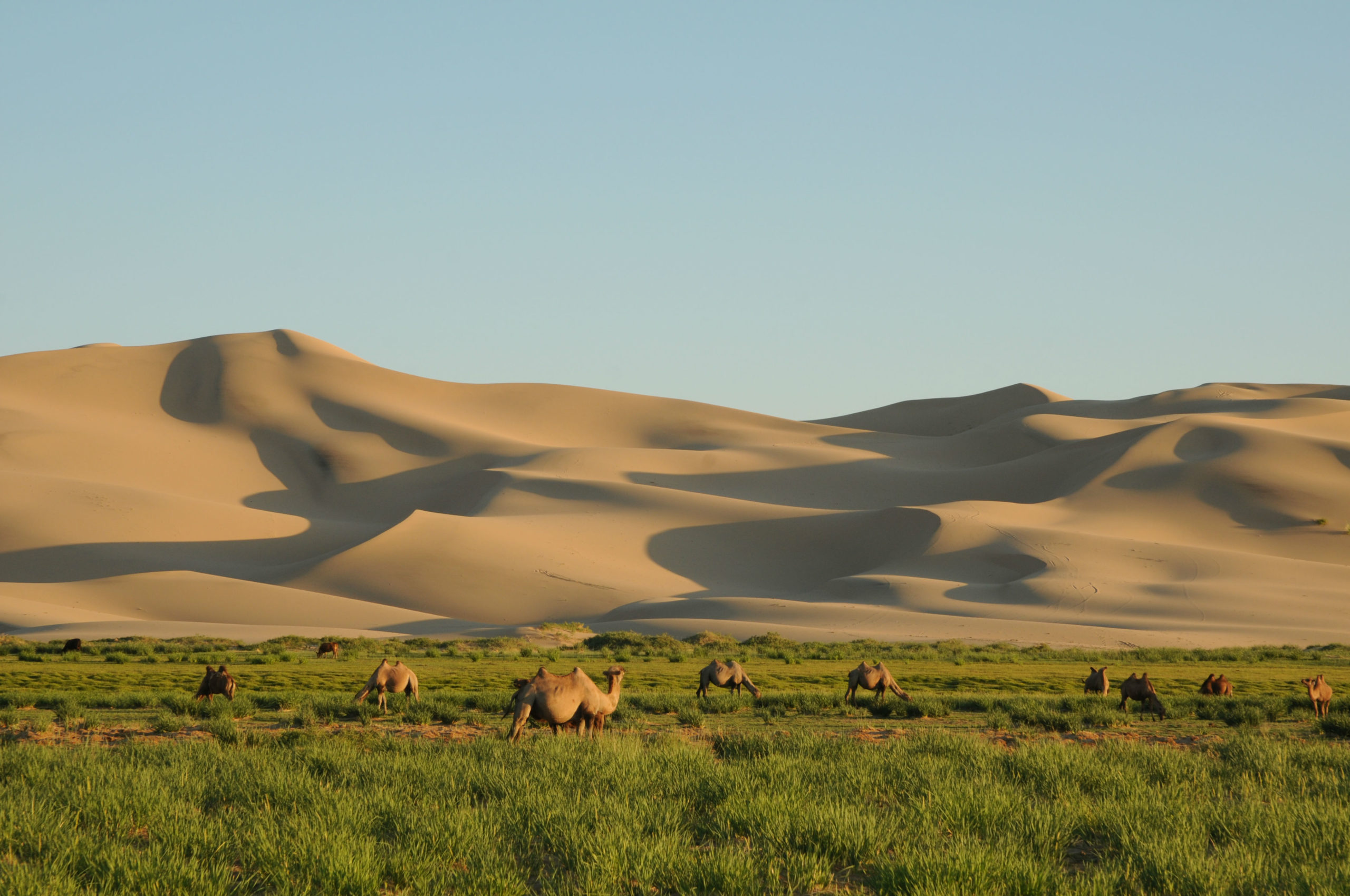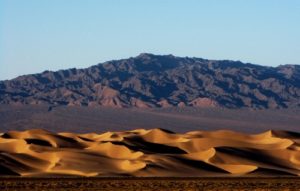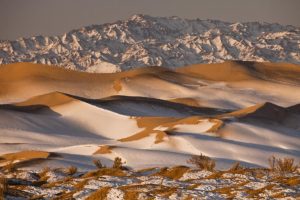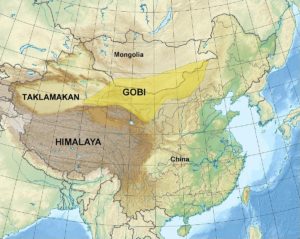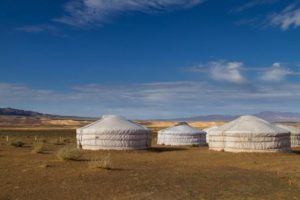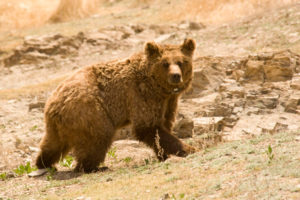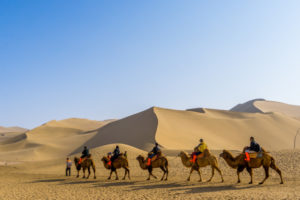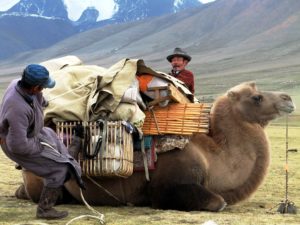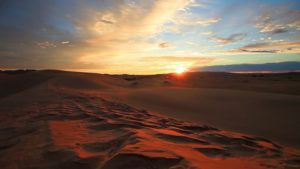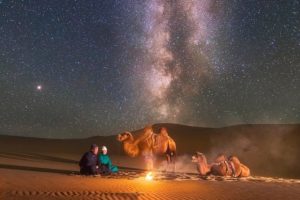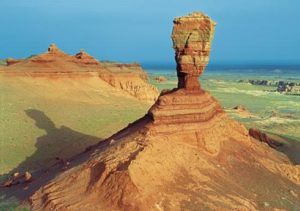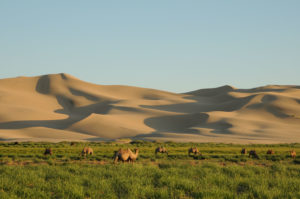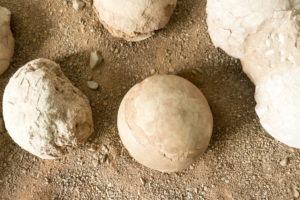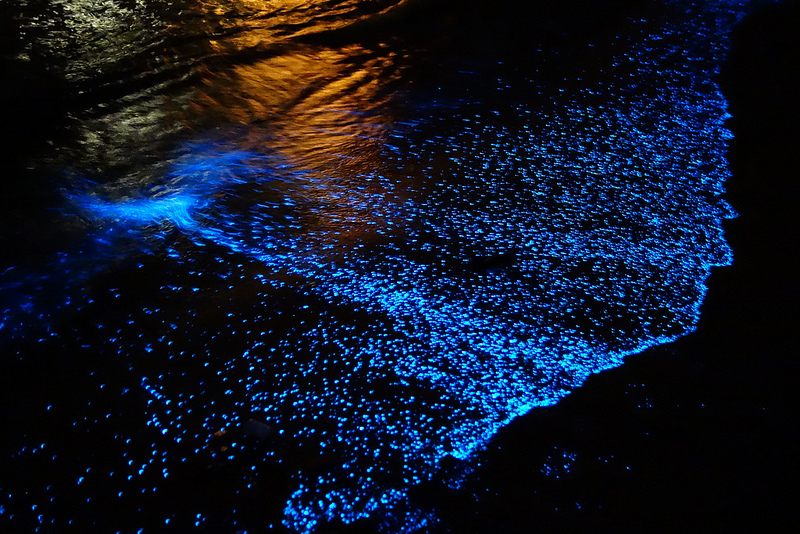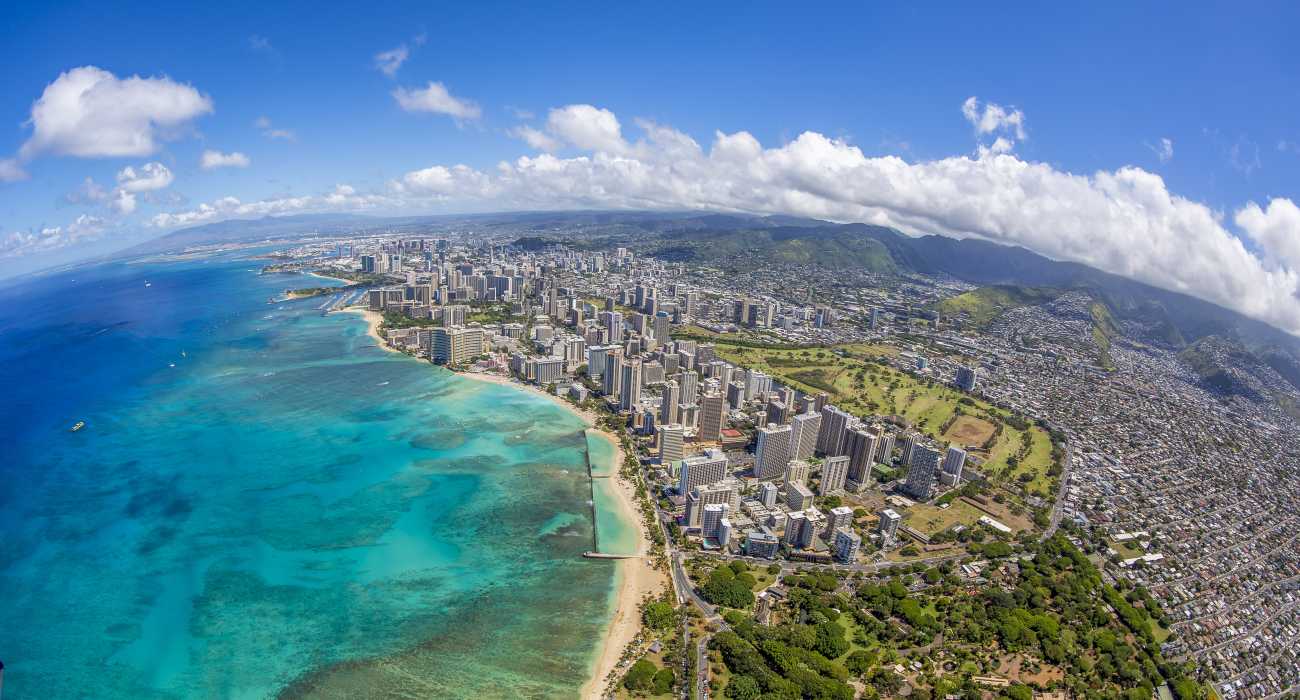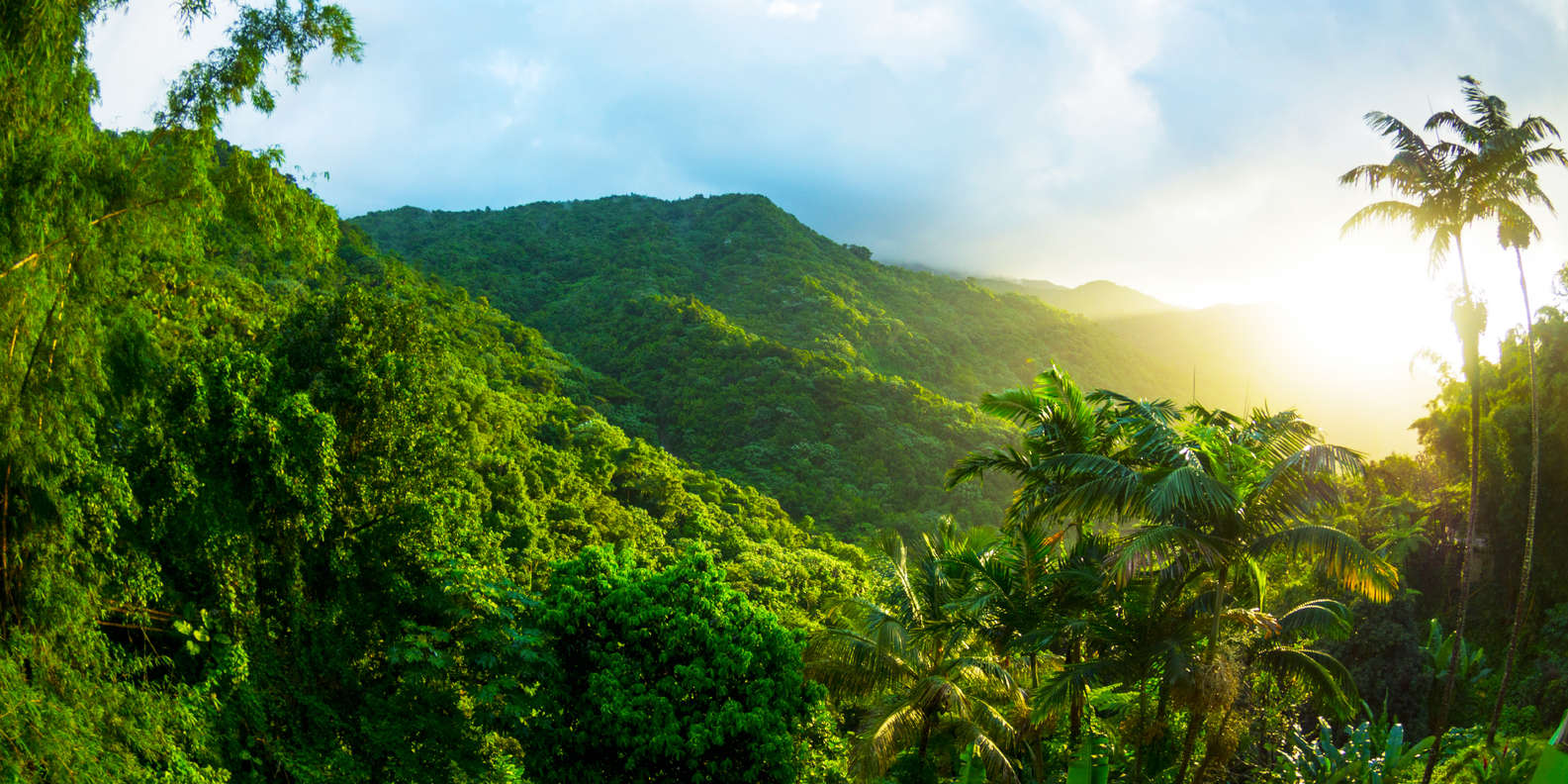Locating through several important cities of the silk route, the Gobi Desert is the largest desert region in Asia. Since it is spread in Southern Mongolia and Northern China, the meaning of “Gobi” is “Desert” in the Mongolian language. And also, since it is a mix of several distinct natural regions, Gobi has various climatic conditions. And it plays an important role when we read about the Mongol Empire.
So, here’s all the information for the desert travelers who need to know about the Gobi Desert. Just scroll down to read more.
Gobi Desert
Gobi Desert Facts
As the 2nd largest desert in Asia, it exists for around 13,000,000 square kilometers. And it is the 5th largest desert in the world. And as mentioned earlier, Gobi means “desert” or waterless places. But this desert is not like others in the world. You may expect to have just orange and yellow sand all over the desert-like others.
But, it is not just bare sand. It has only 5% of dunes. Most of the parts are filled with bare rocks. It is also the desert with one of the biggest dunes in the world called “Khongor Sand Dune.” It is 180km long, 12km wide, and 80 meters high. Honestly, this sand dune is beautiful and offers you stunning views.
In the case of Archeological facts, Gobi takes an important place. The history of this desert runs to more than 1000 years. Many important fossils have been found, and even dinosaur eggs were found for the first time in the world in 1923 from the Gobi desert.
Gobi Desert Ecosystem
Gobi Desert (Also called the Mongolian Gobi Desert) can split into 5 different ecoregions. They are as follows:
Regions of Gobi
Alashan Plateau semi-desert: This is the largest plateau located on the south side of Gobi. Normally this area gets around 6 inches of rainfall annually. But it differs from place to place. And also, it has some rivers and an oasis on the eastern side of the plateau.
Gobi Lakes Valley desert steppe: This narrow long valley has a dry and windy summer and a moderately cold winter. It gets around 2 to 8 inches of rainfall annually. Due to that climate, it has creatures of the arid landscape and also wetlands (like birds, various reptiles, amphibians, and more). Those creatures are adopted to both of the above climates.
Eastern Gobi desert steppe: This region is plain, which contains few to no trees. Since it gets 4 to 6 inches of precipitation in the summer, diversified mammals and birds are there in this steppe, especially in the side of Mongolia. On the other hand, it contains numerous salt pans, little mountains, and ponds as well.
Tian Shan Range: Tian is the western ecoregion of Gobi. And it has an isolated mountain range and high ridges. The highest elevations receive around 16 to 32 inches of precipitation annually, while lower ones receive 4 to 8 inches. It has a savannah with shrubs, grasses, trees, mountains, rivers, and more. It is a kind of fertile ecoregion compared with others.
Dzungarian Basin semi-desert: The elevation of this area ranges from about 1600 to 3300 feet above sea level. It has moderate summers and very cold icy winters. Completely different climate conditions. So, the variety of fauna and flora is also wide.
Now you can see the difference of the ecoregions of Gobi. But unfortunately, the desert is suffering from the intrusions of humans and climate changes (including desertification). Overhunting, overgrazing, irrigation agriculture are some of them which affect the nature of the desert so badly. As a result of that, Gobi’s animals like camels are losing their grasslands, and the desert is enhancing. (Gobi Desert)
Suggested Reading: Best hikes in Utah
Is Gobi Desert Hot or Cold
When it comes to the climate of Gobi, it is so cold in the winter. And it gets snow and covers the dunes. The reason behind that is the northern proximity of the desert. And it exists at around 2990-4990 feet above sea level. Therefore, you may see that kind of winter climate with snow. Normally, Gobi considers overall as a cold desert due to all of those reasons.
The desert gets approximately 194 mm rainfalls annually. As mentioned earlier, additional moisture comes to some parts of the Gobi in the winter as snow and Siberian Steppes’ wind blows it. That wind sometimes creates a temperature around 40 Celcius in summer and -40 Celcius in winter.
On the other hand, the temperature of Gobi can vary not only within seasons but also within a day. (Gobi Desert)
What is the Gobi Desert Famous for?
Mongolian Gobi Desert is more famous as the largest dinosaur fossil reservoir in the world. And this region is considered to have dinosaur fossils from the Cretaceous period, which was the last phase of their evolution. So, it was discovered dinosaurs laid eggs for the first time in the world. Then, Gobi attracted world attention and got an archeologically important place in the world.
On the other hand, it is famous for having the world’s most extreme weather conditions with rapid fluctuations even within the day.
And as mentioned earlier, it is rich in fauna and flora rather than sand like other deserts. It includes steppes, mountains, rivers, bare rocks, and dunes. (Gobi Desert)
The Gobi Desert is famous for one of the biggest and beautiful sand dunes called Khongoryn.
On the other hand, Gobi is very famous for its rich copper, gold, and coal deposits. Fortunately, Gobi owns the world’s third-largest gold and copper mine called Oyu Tolgoi.
Gobi Desert History
Since the Gobi Desert served several major cities along the silk route, it played a major role in the great Mongol Empire. Actually, Gobi was flourishing the Mongol Empire by staying along the silk route. It became known well after Marco Polo identified, introduced, and described this land for Europe in the 13th century.
And some geologists have proved that once upon a time, Gobi was a sea bed. They show evidence of fossilized sea lilies, coral heads, various shells in the Altai Province. (Gobi Desert)
Gobi Desert Map
As you can see on the map, the Gobi Desert covers Southern Mongolia, Northern China, and Northeastern China. The basins of Gobi are bounded by the Altai Mountains and Steppes of Mongolia on the Northern side. And by the west side, Taklamakan Desert is there. The southwest side is bounded by Tibetan Plateau and Hexi Corridor, while China Plain covers the north to the southeast.
According to the location of Gobi, it is a rain shadow just like the Atacama Desert in Chile. Due to Tibetan Plateau and Himalayan Mountain Range act as blocks to reach the precipitation from the Indian ocean. So, Gobi doesn’t get rain. (Gobi Desert)
Gobi Desert Population
Believe me. There are a certain amount of people who consider this land as their home. Most of them are Mongols and Han Chinese people. They are spending a very simple life using traditional income sources like raising cattle. And they live in traditional places called yurts or Mongolian Gers, which are often portable from place to place.
Gobi Desert Animals
The Gobi is more famous for several unique animal species. Since it has different climate conditions mentioned above, you can see snow leopards, wolves, and brown bears in the winter. Yeah, it is surprising. And the Gobi has a surprising number of animal types. They include lizards, Mongolian wild donkeys, camels, gazelles, polecats, and many more.
When it comes to bears’ species, the Mongolian Gobi Desert has ancient subspecies of the brown bear. And also, only desert-dwelling bear species Mazaalai is living here. They called “Gobi Bear” and living less than 30 bears. And they are the only bears last preserved bear species that is not preserving in a zoo. (Gobi Desert)
And also, Bactrian camels‘ native place is the Gobi Desert. Out of all the Bactrian camels live in the world, 70% are living in the Gobi. Others are scattered to the semi-desert regions in the world. So, you can see all of these animals if you visit the Gobi Desert in your travel life.
Visit Gobi Desert
Just plan a tour to the Gobi, since it is worth traveling and see all these natural wonders. Do not forget to visit the Mandalagovi desert town, a factory town during the Soviet Union, hike in the Gurvan Saikhan Mountain Range. All the above-mentioned historical and natural things. (Gobi Desert)
Here are some travel tips for you
- As we all know, the Gobi Desert has a climate variation, and only 30% occupies by the dunes. Therefore, Stinging nestle trees are very common. Especially if you are traveling with your family, be aware that it is very sting and long-lasting. Do not touch any grass or tree if you are not well aware.
- Check the weather condition in the desert and follow the weather forecast before the visit.
- As explained earlier, Gobi’s temperature fluctuates highly even in the day. So, when you travel there, get ready for the warm and very sunny day in the morning, afternoon, and evening. But, the night is very cold and bring warm clothes. It also brings the other normal travel things relevant to a desert journey like walking boots, sandals, binoculars, and long-sleeved t-shirts.
- When you travel the Gobi off-road, keep in mind, it doesn’t have sophisticated roads. They are muddy and bumpy. So, if you have motion sickness, get ready with enough water and pills.
- Do not forget to bring sunglasses, sunblock, insect repellent, and other protections.
- Only Ger Camps and villages offer flush toilets for you.
- You can charge electronic devices at Ger Camps. But, do not expect to have the internet anywhere. (Gobi Desert)
Things to do in the Gobi Desert
You can visit the Gobi Desert by using a domestic flight at Dalanzadgad airport within 1.5 hours. Another way to travel there is, take a car drive from the capital Ulaanbaatar and travel for around 532km while sightseeing. And the drive will take around 8 hours. But it depends on the time you spent on the way.
The best time to visit the desert is from August to October, with a very bright and slightly rainy climate. But July to August is having the hottest day of the year while the spring is so windy and dry. (Gobi Desert)
Experience the warm hospitality of Nomad people
For me, this is the top reason to travel to the Gobi. Nomadic people are very simple living people and treat their guests in a great way. They offer camel milk, sweets, and whatever they have hotly. You can have a close look at the way they live and feel the simplicity of their lives. The most interesting part is listening to the old stories from the elder nomads in the house. (Gobi Desert)
Visit the National Treasure of Mongolia
On the north side of Bayanzag, passing the south of Tevsh Khairkhan is considered as Tugrugiin Shiree. There you can see two fighting dinosaurs (Velociraptor and Protocerapture). They were preserved in a fighting action pose, which runs to the history of 80 million years ago.
Tarbosaurus Bataar- Asian T-rex
Mongolia was the real Jurassic Park millions of years ago. Therefore, you can see several dinosaur skeletons, fossils, laid eggs, and footprints in the Gobi Desert in Mongolia. The whole skeleton of a Tarbosaurus was found in the same place and displayed for you.
The first skeleton was found in 1946 and displayed in the Paleontological Institute of Academy of Sciences in the Gobi Desert. So, it is totally worth visiting and watch it.
Getting surreal photos of the Gobi Desert and night camping
The Gobi offers you stunning sunrise and sunset photos for your camera. And on the other hand, you can plan for a great night desert camp with your travel buddies. Always the sky is super clear, and stars are visible. So, this destination is made for adventure travelers and travel photographers.
Suggested Reading: Wadi Rum Jordan
Camel Riding around the Gobi
Since this is the home for the majority of Gobi Bactrian camels, there’s a festival called “Thousand Camel” to honor the camels. The festival is held at the beginning of every March. There you can see camel competitions, parades, polo, and cultural events. So, do not miss it.
I think a Gobi Desert tour is not completed without a camel ride around the desert. So, I highly recommend you try a ride and feel the real desert feeling. (Gobi Desert)
Visit Red mudrocks in Khermen Tsav in the Gobi Desert.
The ancient formations of rock structure in the Khermen Tsav fossil site are more famous worldwide. Most of the travelers attract to this place to visit the fossil site and, on the other hand, to watch the red sandstone cliffs.
Visit spectacular high mountains in the Gobi.
Yoliin Am Canyon, or Valley of eagles, located in Gobi Gurvan Saikhan National Park in Dalazagad city, is one of the most favorite places. It offers you stunning high mountain rocky walls. It is a rare view in the desert. So, do not miss it.
Ideal for meditation
If you love to meditate or do Yoga wherever you travel, Gobi is one of the calmest and best places for such a thing. Flaming cliffs in the Gobi is the ideal place for that.
Even the Khongor sand dunes are calmer and beautiful, with a view of high mountains on the other edge. This kind of place really allows you to find yourself by feeling mother nature. (Gobi Desert)
Visit the richest Dianosour fossil site in the world.
If you want to see the fossils, eggs, skeletons, and footprints of Cretaceous Dinosaurs’, the Gobi Desert is the best place in the world. In most parts of the desert, you can find those signs.


